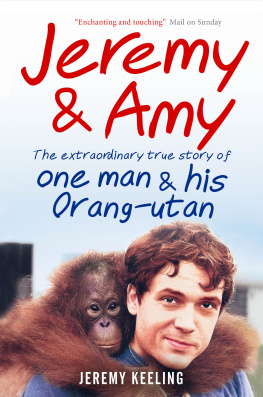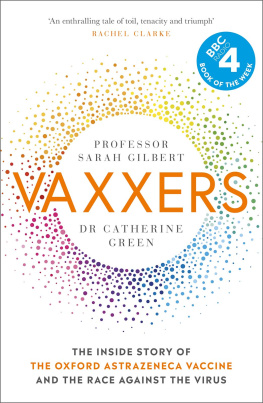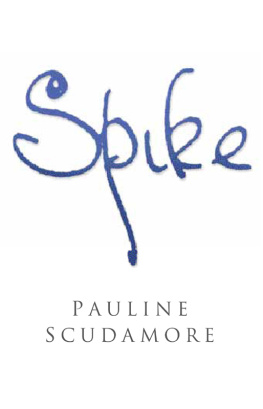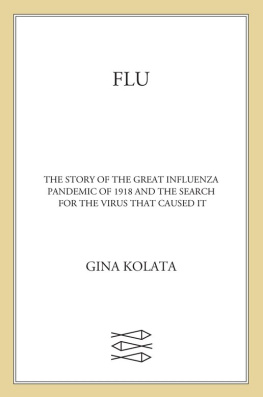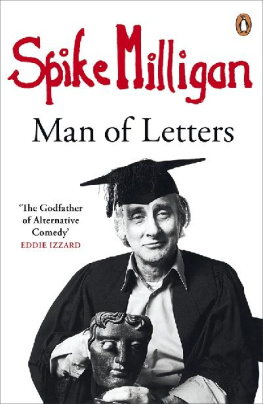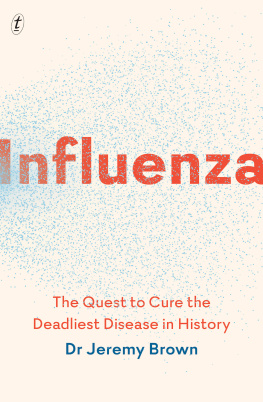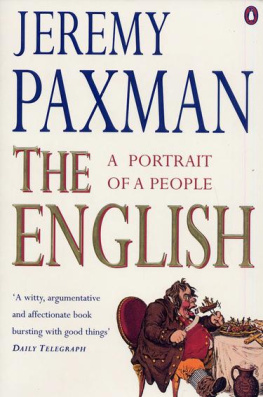Jeremy Farrar - Spike: The Virus vs. The People - the Inside Story
Here you can read online Jeremy Farrar - Spike: The Virus vs. The People - the Inside Story full text of the book (entire story) in english for free. Download pdf and epub, get meaning, cover and reviews about this ebook. genre: Detective and thriller. Description of the work, (preface) as well as reviews are available. Best literature library LitArk.com created for fans of good reading and offers a wide selection of genres:
Romance novel
Science fiction
Adventure
Detective
Science
History
Home and family
Prose
Art
Politics
Computer
Non-fiction
Religion
Business
Children
Humor
Choose a favorite category and find really read worthwhile books. Enjoy immersion in the world of imagination, feel the emotions of the characters or learn something new for yourself, make an fascinating discovery.
- Book:Spike: The Virus vs. The People - the Inside Story
- Author:
- Genre:
- Rating:3 / 5
- Favourites:Add to favourites
- Your mark:
- 60
- 1
- 2
- 3
- 4
- 5
Spike: The Virus vs. The People - the Inside Story: summary, description and annotation
We offer to read an annotation, description, summary or preface (depends on what the author of the book "Spike: The Virus vs. The People - the Inside Story" wrote himself). If you haven't found the necessary information about the book — write in the comments, we will try to find it.
Spike: The Virus vs. The People - the Inside Story — read online for free the complete book (whole text) full work
Below is the text of the book, divided by pages. System saving the place of the last page read, allows you to conveniently read the book "Spike: The Virus vs. The People - the Inside Story" online for free, without having to search again every time where you left off. Put a bookmark, and you can go to the page where you finished reading at any time.
Font size:
Interval:
Bookmark:

THE VIRUS vs THE PEOPLE THE INSIDE STORY
Spike The Virus vs The People: The Inside Story
Published in July 2021 by Profile Books Ltd
29 Cloth Fair, Barbican,
London EC1A 7JQ
www.profilebooks.com
Copyright Jeremy Farrar & Anjana Ahuja
The moral right of the authors have been asserted.
All rights reserved. Without limiting the rights under copyright reserved above, no part of this publication may be reproduced, stored or introduced into a retrieval system, or transmitted, in any form or by any means (electronic, mechanical, photocopying, recording or otherwise), without the prior written permission of both the copyright owner and the publisher of this book.
A CIP catalogue record for this book is available from the British Library.
ISBN 9781788169226
eISBN 9781782839101
THE VIRUS vs THE PEOPLE THE INSIDE STORY
Jeremy Farrar with Anjana Ahuja

30 DECEMBER 2019
Known cases: 4
I WAS IN AN AIRPORT lounge on New Years Eve 2019 when my mobile rang. I was heading back to England from Rwanda and the Democratic Republic of Congo, where I had been visiting the Ebola vaccination centres in Rwanda across the politically fraught border region of North Kivu. Id spent around a week going around the clinics and Id had the vaccine myself in Prefegitura ya Cyangugu, a village in Rwanda. I was absolutely knackered and looking forward to a couple of days at home in Oxford before heading back to the office.
I was scanning my phone when I saw a report of a mystery pneumonia spotted by doctors at a hospital in China. I sent a short text message to George Gao, head of the Chinese Center for Disease Control and Prevention (China CDC) in Beijing, and an old friend. George is a very likeable character, as well as a respected scientist, a brilliant impressionist and a karaoke enthusiast. My message was short and simple, just asking if he was OK and that he should reach out if he needed anything.
He phoned me back. Very soon, George told me, the world would be hearing about a cluster of cases of a new pneumonia from Wuhan in China. The cases had already been reported to the World Health Organization. It was, essentially, a courtesy call from one scientist to another. I remember him telling me that we wouldnt need to worry because it wasnt severe acute respiratory syndrome (SARS), and that we must keep in touch.
It was a relief to hear him rule out SARS, a deadly disease that features on the worlds worry list and for which there is no vaccine or cure. It first appeared in 2002 and one of its victims, Carlo Urbani, was a good friend of mine. He died while investigating an outbreak in Hanoi, Vietnam. He was just 46 and had a young family.
Carlos work helped to identify SARS as a new coronavirus. Most importantly, he spotted that cases of severe pneumonia were being passed on from patients to health workers, who were falling sick and dying. Carlo organised the hospitals closure, alerted the world and, essentially, saved Vietnam. His legacy is honoured, if that is the right word, in the naming of the Urbani strain of the virus. This was the dominant strain that spread across South East Asia in 2003, before being contained, infecting more than 8,000 people and killing nearly one in ten of them.
Having spent eighteen years running an infectious diseases research facility in Ho Chi Minh City, I was badly shaken by Carlos death. I know what it is like to deal with the science and politics of a new disease. I helped to alert the world to a potentially serious outbreak of H5N1 bird flu in Vietnam in 2004, along with colleagues Tran Tinh Hien, Nguyen Thanh Liem and Peter Horby, then an epidemiologist working for the World Health Organization in Hanoi and now an Oxford University scientist.
Both SARS and H5N1 had a profound psychological impact on me, because of the fear that comes with unknown diseases. They took me back to being a young doctor in London at the start of the HIV epidemic: as medical students and junior doctors we rarely stopped to question the power of medicine, believing unerringly that we could treat people and cure them. But when HIV came along in the early 1980s we could do nothing. Young people would come in to die. The West had not seen deaths from untreatable infectious diseases for many years.
When SARS came, it was the same. You dont know what youre dealing with, youre frightened, friends are dying and its spreading around the world. Six months later, SARS was finished because it did not transmit readily between people: also, people were most infectious when they were symptomatic. There was little or no asymptomatic transmission, meaning that isolating people with symptoms brought a chain of transmission to an end. Despite lasting only six months, and causing only 774 deaths, the epidemic was estimated to have cost around US $40 billion.
The next year, bird flu struck Vietnam. It never got beyond about 100 cases but it killed roughly 60 per cent of people who caught it. We got lucky because, again, the disease fizzled out. These episodes, along with the emergence and reemergence of other diseases over the last twenty years such as the deadly bat-borne Nipah and Middle East respiratory viruses, and the mosquito-borne Zika virus, were the warnings for what would inevitably come.

When I went back to work on Friday 3 January 2020, I emailed two of my most senior colleagues: Eliza Manningham-Buller, the Chair of the Wellcome Trust and former director general of the UK intelligence agency MI5, and Mike Ferguson, her deputy. I would not normally trouble them about a small, distant outbreak but this one in China felt different. If it turned out to be different, the Wellcome Trust, where I have been director for eight years, would be called upon for its expertise and money. The charity has long worked in the field of infectious diseases, with researchers all over the world; it played a key role in the research response to the Ebola outbreaks of 2014 and 2018, including funding vaccine research and clinical trials.
Prefaced with the line Just for info in confidence, I told Eliza and Mike about my phone conversation with George Gao and included a link to a news item on the BBC website about the mystery viral pneumonia from Wuhan. Just before signing off, I speculated that China CDC would make an announcement within 48 hours. I assumed thats what George had meant by his phone call. I reassured Eliza and Mike that it is not SARS, although probably a known relative. Nothing for Wellcome to do at the moment.
I turned out to be wrong. The cases of unexplained and untreatable pneumonia in Wuhan kept growing, matched later by reports of crowded hospital wards and overflowing mortuaries. Social media and online chat rooms in China hummed with rumours of a strange new illness spreading in Wuhan, including among hospital workers; reports began filtering in of police crackdowns on those trying to get information out over the heavily monitored internet.
By the second week of January, I was beginning to realise the scale of what was happening. I was also getting the uncomfortable feeling that some of the information needed by scientists all around the world to detect and fight this new disease was not being disclosed as fast as it could be. I did not know it then, but a fraught few weeks lay ahead.
Next pageFont size:
Interval:
Bookmark:
Similar books «Spike: The Virus vs. The People - the Inside Story»
Look at similar books to Spike: The Virus vs. The People - the Inside Story. We have selected literature similar in name and meaning in the hope of providing readers with more options to find new, interesting, not yet read works.
Discussion, reviews of the book Spike: The Virus vs. The People - the Inside Story and just readers' own opinions. Leave your comments, write what you think about the work, its meaning or the main characters. Specify what exactly you liked and what you didn't like, and why you think so.


